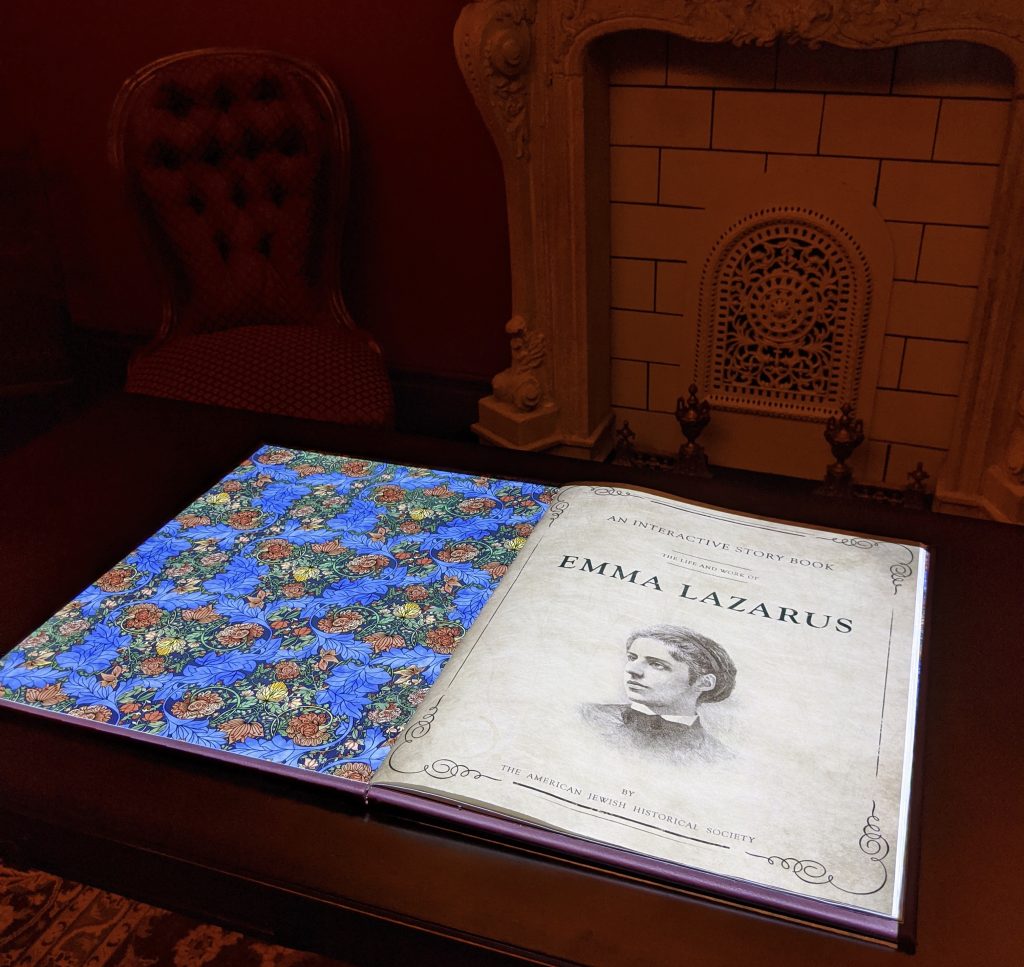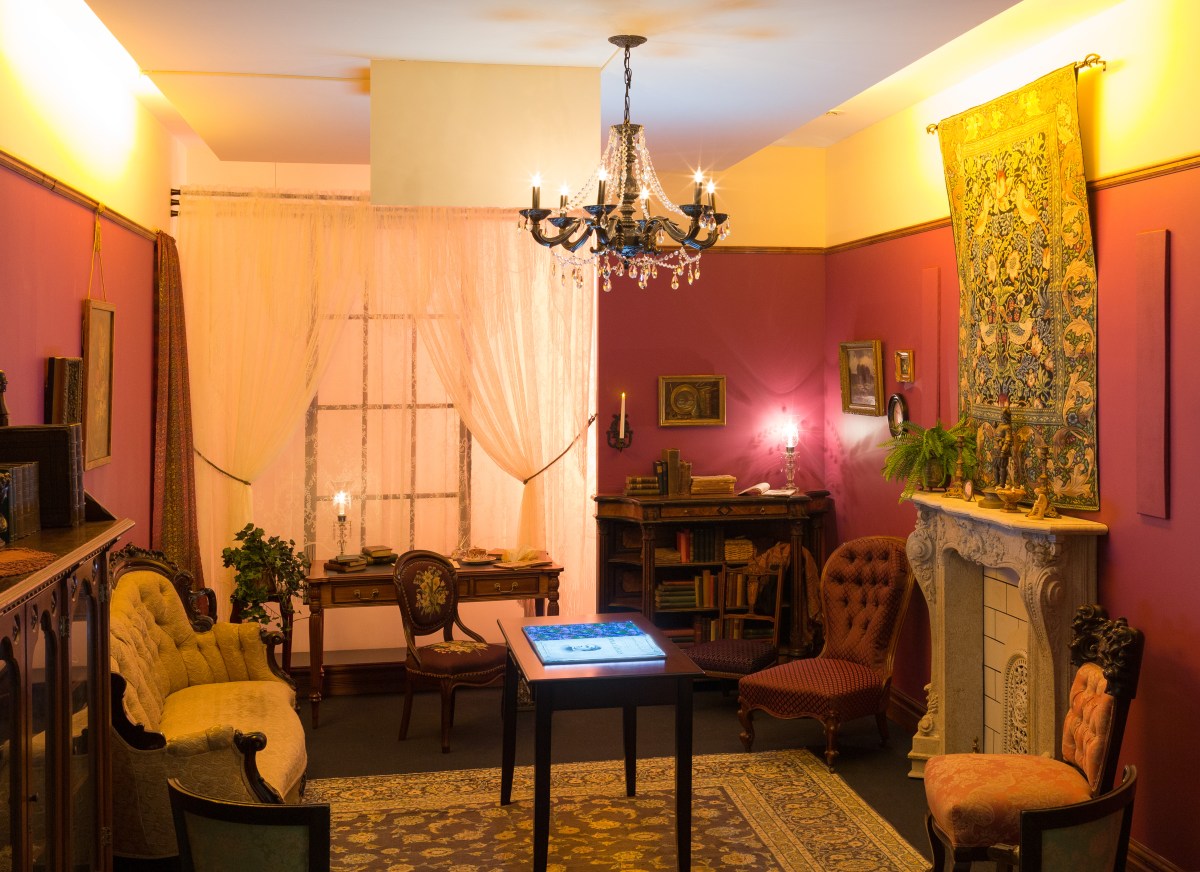A new exhibit in Manhattan explores the life of poet Emma Lazarus and the history behind her famous poem “The New Colossus,” which appears on the Statue of Liberty’s pedestal.
The exhibit was produced by the American Jewish Historical Society, and is at the Center for Jewish History, at 15 West 16th St. in Chelsea. It includes a detailed replica of Lazarus’ sitting room in her Chelsea home. There is an accompanying curriculum offered that teachers can use, and a poetry contest where students are asked what poem they would write today for the Statue of Liberty.
Lazarus (1849-1887) grew up in a Brownstone on West 14th Street in Manhattan, and later lived in a Brownstone on West 10th Street near Union Square, where she wrote “The New Colossus,” which includes the lines “Give me your tired, your poor, Your huddled masses yearning to breathe free.”
The poem is a sonnet that Lazarus wrote in 1883 as a donation to an auction to raise funds for construction of a pedestal for the Statue of Liberty. A plaque with the poem would be put on a wall of the pedestal in 1903.
Large numbers of immigrants were coming to America during the 1880s, and not everyone agreed with the poem’s welcoming sentiment, noted Annie Polland, executive director of the American Jewish Historical Society (AJHS).
Lazarus was a fifth-generation American from a Sephardic Jewish family. She was a part of wealthy circles, but some would talk behind her back, Polland noted. “She had experienced what people call social anti-Semitism her whole life,” she said. Lazarus was also an advocate for Russian Jewish refugees escaping persecution.
Lazarus was inspired by social activism happening at nearby Union Square, including the first Labor Day parade in 1882, Polland noted, and by economist Henry George, who sparked reform movements and wrote about inequality in society.
The origins of the exhibit go back to notebooks of Lazarus poems that AJHS has, which Polland said would elicit strong reactions from people, with many not knowing much about her life.
“Her early life was steeped in education and has roots in New York City,” Polland said of Lazarus, who wrote a 200-page collection of poems at age 17.
“People have been amazed,” Polland said of the exhibit, which opened in December. Visitors are allowed to sit on the furniture and the exhibit includes an interactive book about Lazarus, where the imagery of each page is projected onto it as the reader turns the page.

The poetry contest is nationwide, and with the goal of having people express what their American ideals are, Polland said. A winner will be announced in May. A second part of the exhibit will open later in 2020, focusing on Union square’s social influences and offering walking tours.
Polland said she hoped the Lazarus exhibit would inspire people to learn more about her and the time period. “We get in trouble when we think of history as static,” she said.
We now take for granted the Statue of Liberty being there and the poem being part of it, “but we need to understand that they came out of a particular moment,” Polland said. That can be the fun of educating people about it, she said, adding, “how can something be so famous and yet so little known.”
The hope in having conversations about history, Polland noted, is that will help to also talk about what’s going on today. “We wanted to look at something that embraces the idea that American identity is something we’re always working on,” she said.
The Emma Lazarus exhibit will be open through 2022, and more information can be found at www.ajhs.org/emma-lazarus-project-exhibition.


















